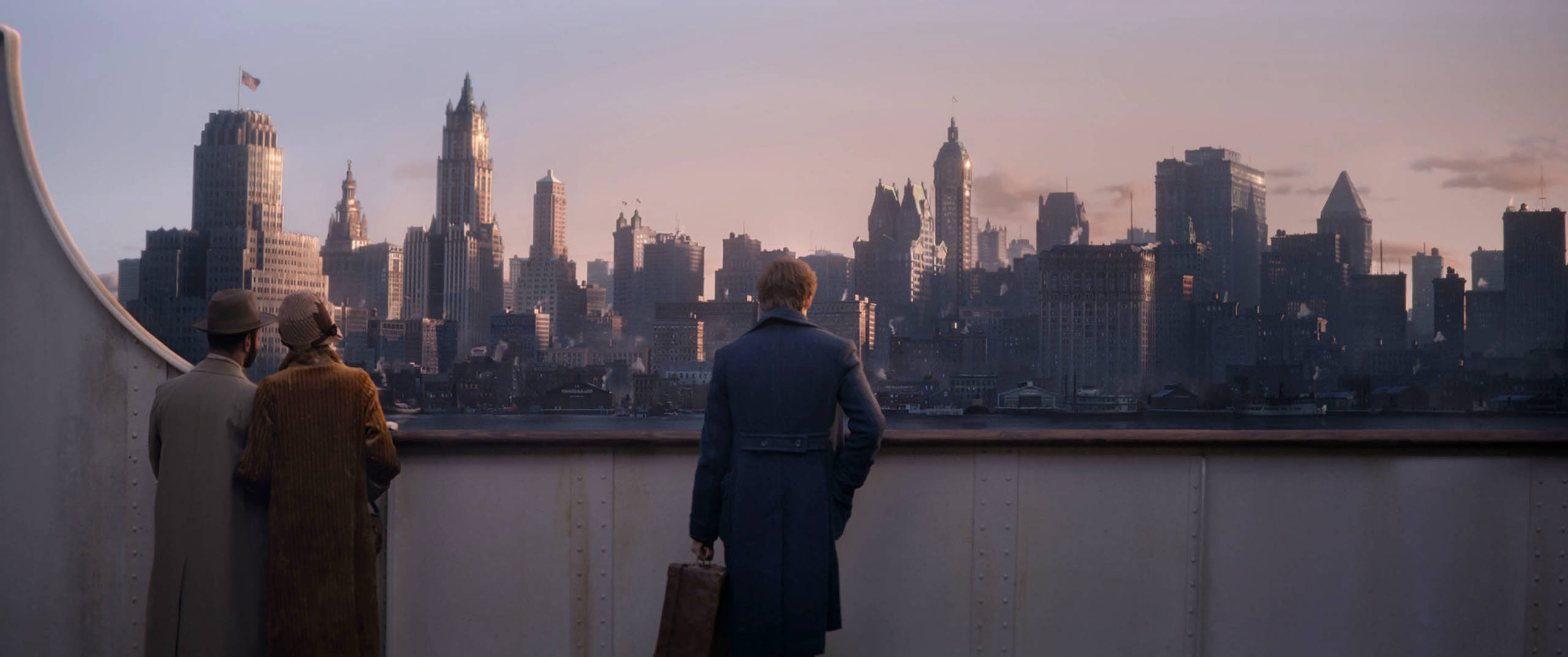
The Big Apple of the Roaring Twenties was quite different from today’s New York, especially when it comes to the glittering skyline you’ve likely seen many times in many movies, including, of course, Fantastic Beasts and Where to Find Them.
Before skyscrapers like the Empire State Building or the World Trade Center ascended, the Woolworth Building was the tallest building in New York – nay, the world – a title that it held on to until the end of the 1920s, when more skyscrapers began to rise over Manhattan. Architect Cass Gilbert’s neo-Gothic creation, built in 1913, stands 792 feet tall, and cut an imposing figure on New York City’s budding skyline.
In the 1920s, New York wasn’t the skyscraper-studded metropolis of today, that’s for sure. From the turn of the 20th century to the Woolworth Building’s rise (and beyond), the architecture of the city was defined by the Beaux Arts style (and its close cousin, the City Beautiful movement), characterised by grand, over-the-top elements like Grecian columns, lavish finishes and ornate decorative touches.
New York City’s awe-inspiring Grand Central Terminal, with its soaring ceilings and lovely exterior, is one of the best examples of Beaux Arts architecture. Grand Central also helped usher in the skyscraper boom in Midtown Manhattan, as real-estate tycoons and other entrepreneurs sought to be close to the world-class train station. (The Chrysler Building, built in 1930, is just one byproduct of this!)
Another of New York City’s Beaux Arts masterpieces – one that is, sadly, long gone – was another train station just across town, Pennsylvania Station. Designed by the famed architecture firm McKim, Mead & White, the train depot was envisioned as ‘a monumental gateway and entrance to one of the great Metropolitan cities of the world’, according to Charles McKim, one of the firm’s founders.
It occupied two city blocks, with many architectural touches – columns, sculptural eagles, an airy concourse and acres of travertine – that helped it live up to that ‘monumental’ description. But it could not withstand the test of time, and was torn down in the 1960s. A new version now stands in its place.
But as stunning as they were, those buildings weren’t exactly tall. Prior to the Woolworth’s opening, New York City had only a few skyscrapers, many of which were clustered in Lower Manhattan. At the time, the most famous of these was the Singer Building. It was an odd building, which is perhaps why it was so legendary: from its thick, 12-story base rose a skinny, 35-storey tower, which was lit at night to make it look even more distinctive. (It too was, alas, torn down in the 1960s.)
Moving further north up the island of Manhattan, there were more skyscrapers that rose before the Woolworth Building that remain, to this day, as beloved architectural icons.
One of these is the Flatiron Building, designed by Daniel Burnham, a Chicago architect who was most famous for supervising the master building plan for the Chicago World’s Fair in 1893. The Flatiron was built nearly a decade later. At first glance it may seem less over-the-top than the grand structures that would follow it, but the building nevertheless reflects the ideals of the City Beautiful movement. It’s functional (and fits into the oddly-shaped, triangular lot) but still ornate, with intricate little ornaments dotted all over its exterior.
Just a few blocks away is the Metropolitan Life Tower, which opened in 1909, and was briefly the tallest skyscraper in the world. That was until the Woolworth was constructed. Inspired by the Campanile in Venice, Italy, it has an enormous, four-faced clock at its tippy-top, a feature that helped distinguish it from other towers of the time. Woolworth followed in 1913, and soon after, a change in New York City’s zoning law helped usher in a new era of skyscrapers: the taller, narrower structure with set-back levels, which later came to dominate the skyline.
As the Roaring Twenties came to a close, the Woolworth Building’s enviable height would be challenged by two structures that would eventually rank among New York City’s most recognisable buildings: the Chrysler Building, which opened in 1930, and the Empire State Building, which quickly followed in 1931, becoming New York’s tallest building at a whopping 1,250 feet high. They also signalled a change in the prevailing architectural style: both are Art Deco masterpieces, with their sculptural steel frames, tall spires and modern ornamentation (the Chrysler’s sunbeam-inspired spire, for example, is utterly gorgeous).
But even as times and styles have changed, the Woolworth Building remains a classic, stately symbol of old New York – so if you ever pop down, make sure you crick your neck and take a look up.

